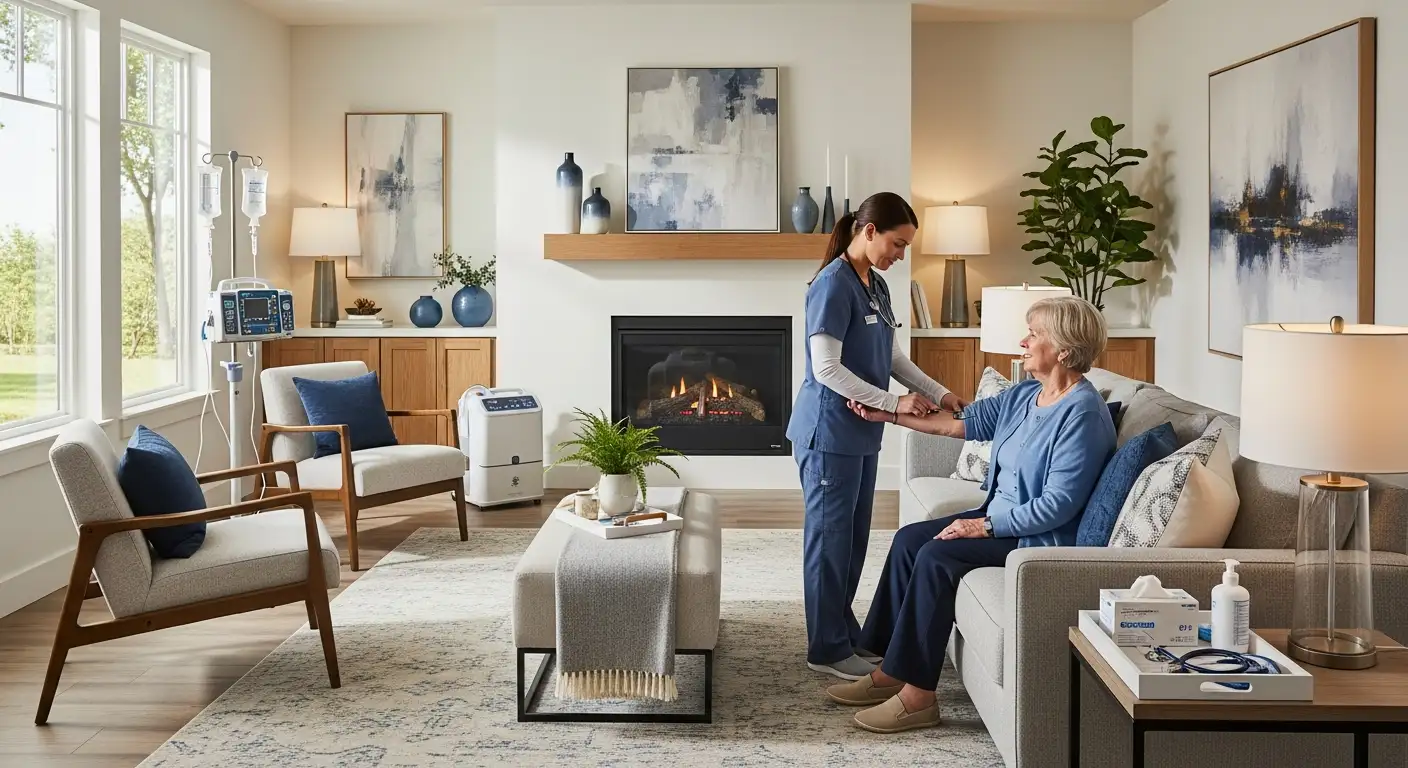Importance of Senior Fitness
Benefits of Physical Activity
Engaging in regular exercise through senior fitness programs can offer numerous advantages for older adults. These benefits include improved strength and balance, which are crucial for reducing the risk of falls. Enhanced physical capabilities also aid seniors in performing daily tasks with greater ease.

Additionally, exercise can assist with weight management. Combining regular physical activity with proper nutrition is essential for maintaining a healthy weight. Physical activity (PA) encompasses all movements produced by skeletal muscles resulting in energy expenditure, which includes deliberate exercise, sports, and physical activities involved in daily living, leisure, or transportation [1].
Regular participation in physical activities is linked to several positive outcomes, such as improvements in mental health, delayed onset of dementia, and an enhanced quality of life. Despite the acknowledged benefits, levels of physical activity among older adults remain lower than recommended. It has been reported that around one in every four to five older adults is physically inactive, while guidelines suggest a target of 150 minutes of moderate activity weekly [1].
Benefit of Physical ActivityDescriptionImproved strength and balanceReduces fall risk and supports daily activitiesWeight managementAssists in maintaining a healthy weightMental health improvementsEnhances mood and cognitive functionQuality of life enhancementsSupports overall well-being and independence
Guidelines for Older Adults
The Centers for Disease Control and Prevention recommend that generally fit adults aged 65 and older engage in 150 minutes of moderate-endurance activity each week. Activities can include walking, swimming, and cycling, as well as strength training exercises. This exercise duration can be broken down into manageable segments of 10 or 15 minutes, performed two or more times each day [2].
Recommended Physical ActivityFrequencyModerate-intensity endurance activities150 minutes per weekStrength training exercisesTwice a week
By adhering to these guidelines, seniors can enjoy enhanced physical fitness, leading to improved health and vitality. Regular participation in tailored programs and group activities can also foster social interaction, which further contributes to overall well-being. For further information on related services, consider exploring topics such as geriatric care management and senior nutrition services.
Types of Senior Fitness Exercises
Engaging in various types of exercises is essential for seniors to maintain their physical health and overall well-being. Three main categories of exercises that benefit elderly individuals are endurance activities, strength training, and stretching and flexibility exercises.
Endurance Activities
Endurance activities are crucial for improving cardiovascular health and maintaining energy levels. The Centers for Disease Control and Prevention (CDC) recommends that older adults aged 65 and above engage in 150 minutes of moderate endurance activity each week. Activities such as walking, swimming, cycling, and light jogging are excellent examples. This duration can be split into smaller segments of 10 to 15 minutes, allowing for two or more sessions per day [2].
Endurance ActivityDuration RecommendedWalking30 minutes dailySwimming150 minutes weeklyCycling150 minutes weeklyLight Jogging150 minutes weekly
Strength Training
Strength training is essential for maintaining muscle mass, enhancing bone density, and improving balance. Recommended exercises for seniors include abdominal contractions, wall pushups, pelvic tilts, shoulder blade squeezes, toe taps, heel raises, knee lifts, and shoulder stretches [2]. Implementing resistance bands or light weights can also be beneficial.
Strength Training ExerciseFocus AreaWall PushupsUpper Body StrengthHeel RaisesLower Body StrengthKnee LiftsCore and BalanceShoulder Blade SqueezesUpper Body Flexibility
Stretching and Flexibility
Daily stretching exercises help seniors enhance their range of motion and comfort in everyday tasks. Stretching can alleviate stiffness, increase circulation, and improve flexibility. Basic stretches such as neck stretches and upper back stretches are beneficial for starting a stretching routine. Additionally, incorporating balance exercises, like tai chi and yoga, can further improve stability and reduce the risk of falls, which is a significant concern for seniors [2].
Basic StretchPurposeNeck StretchRelieves neck tensionUpper Back StretchImproves postureTai ChiEnhances balanceYogaIncreases flexibility
By incorporating these types of exercises into their fitness programs, seniors can enjoy numerous health benefits. Regular physical activity contributes to improved mobility, reduced risk of chronic diseases, and enhanced quality of life. For more information on senior fitness programs, visit our resource on senior nutrition services or geriatric care management.
Tailored Fitness Programs
Tailored fitness programs for seniors play an essential role in promoting physical activity and overall well-being. These programs are designed to accommodate the unique needs of elderly individuals, focusing on improving strength, balance, and mobility. Below are three notable programs that cater specifically to older adults.
Active Choices Program
The Active Choices program is a six-month physical activity initiative that provides personalized guidance and support. Participants receive individual coaching and regular mail follow-ups to help integrate preferred physical activities into their daily lives. This program emphasizes engagement and empowerment, allowing seniors to select exercises that resonate with their interests, thereby enhancing adherence and enjoyment.
Key FeaturesDetailsDuration6 monthsSupport TypeIndividualized guidance, mail follow-upsFocusIncorporating preferred physical activities into daily routines
EnhanceFitness Program
The EnhanceFitness program is a low-cost, adaptable exercise initiative tailored to older adults. It addresses a range of fitness levels and emphasizes components vital for senior fitness including stretching, flexibility, balance, low-impact aerobics, and strength training. This program encourages social interaction, as classes are often conducted in group settings, adding an additional layer of support for participants.
Key FeaturesDetailsCostLow-cost, accessibleFlexibilityDifferent levels availableFocusStretching, balance, low-impact aerobics, strength
Tai Ji Quan: Moving for Better Balance
The Tai Ji Quan: Moving for Better Balance program is an evidence-based initiative aimed at fall prevention among older adults. This program incorporates functional Tai Ji Quan exercises that help improve balance and strength, thus reducing the risk of falls. By engaging in these gentle movements, seniors can enhance their stability and overall physical health.
Key FeaturesDetailsFocusFall prevention through balance exercisesMethodFunctional Tai Ji Quan exercisesTarget GroupOlder adults at risk of falls
These tailored fitness programs serve as effective tools for maintaining and enhancing physical fitness among seniors. By focusing on individual needs, preferences, and safety, these programs contribute significantly to the health and quality of life for elderly individuals. For more information on the benefits of physical activities, consider exploring our articles on senior social activities and senior nutrition services.
Community Fitness Initiatives
Community fitness initiatives play a crucial role in promoting senior fitness programs by providing opportunities for older adults to engage in regular physical activities. These initiatives often focus on evidence-based programs that are tailored to the needs of seniors, ensuring they stay active and healthy.
NCOA's Supportive Programs
The National Council on Aging (NCOA) is dedicated to connecting community organizations with evidence-based exercise and training programs designed to keep seniors active. They emphasize the importance of regular physical activity for older adults to maintain independence and prevent health complications. Some notable programs include:
Other programs led by NCOA also include evidence-based interventions such as Active Living Every Day and the AEA Arthritis Foundation Aquatic Program. These programs aid seniors in maintaining mobility, muscle strength, and overall functional ability.
Evidence-Based Exercise Programs
Evidence-based exercise programs are carefully researched and developed to ensure effectiveness in enhancing senior fitness. These programs typically take into account the unique needs and challenges faced by older adults. Below is a table summarizing various evidence-based programs and their key features:
Program NameDescriptionKey Focus AreasActive ChoicesIndividualized guidance for incorporating physical activity into daily lifeBehavioral support, motivation, and activity choiceEnhanceFitnessAdaptable exercise routines for older adultsStrength, balance, flexibility, and low-impact aerobicsAEA Arthritis Foundation Aquatic ProgramWater-based exercises designed for those with arthritisMobility, pain reduction, and gentle resistance training
These initiatives often receive support from federal funding sources, including the Administration for Community Living, Older Americans Act Title III-D funding, and CDC grant funding. By participating in community fitness initiatives, seniors can significantly improve their health, well-being, and quality of life.
Older adults and caregivers looking for additional resources may explore topics like senior social activities or geriatric care management for more comprehensive support options.
Exercise Considerations for Seniors
Before initiating a fitness program, there are important considerations for seniors to ensure safety and effectiveness. This section covers health screenings, potential medication interactions, and guidelines for exercise prescriptions tailored to older adults.
Health Screenings
Preparticipation health screenings should be performed for older adults before starting any exercise regimen. This process helps identify individuals who may require medical clearance due to existing health conditions. Screenings aim to assess cardiovascular risks, especially in sedentary individuals or those with known cardiovascular diseases.
A typical health screening may include:
Medication Interactions
Many seniors take various medications, making it essential to evaluate potential interactions with exercise. Clinicians should assess both the additive and harmful effects these medications may have on physical activity. Understanding how exercise influences each medication alone and in combination can help ensure a safe and effective fitness program [4].
Common classes of medications to consider include:
Exercise Prescription Guidelines
Establishing an effective exercise prescription is vital for promoting health in seniors. Recommendations suggest a combination of aerobic, resistance, flexibility, and balance training to enhance overall fitness.
Activity TypeFrequencyIntensity LevelAerobic ExerciseAt least 5 days/weekModerate intensityResistance TrainingAt least 2 days/weekVarying intensityFlexibility ExercisesAt least 2 days/weekGentle stretchingBalance TrainingIntegrated into sessionsTo improve stability
Following these guidelines can support health maintenance and reduce fall risks. Programs focusing on balance activities for over three hours per week have demonstrated a significant impact on lowering falls in older adults [1]. Engaging in these prescribed activities aligns with best practices within senior fitness programs.
Regular assessments and modifications to the exercise plan should be incorporated, based on individual progress and any changes in health status. This tailored approach to fitness will help older adults enjoy the physical, social, and emotional benefits that come from maintaining an active lifestyle.
Impact of Physical Activity
Engaging in physical activity significantly influences the health and well-being of older adults. It provides various mental and physical benefits that can enhance their overall quality of life.
Mental Health Benefits
Regular participation in senior fitness programs can greatly improve mental health. Exercise has been shown to reduce stress and anxiety levels, offering positive effects for seniors, particularly those with cognitive conditions like Alzheimer's and dementia. Physical activity promotes good mental health by releasing endorphins, which are natural mood lifters [5].
Furthermore, maintaining an active lifestyle contributes to cognitive stimulation and can enhance memory and concentration. Ensuring that older adults are engaged in both physical and cognitive activities is vital for promoting mental well-being. For more information on cognitive activities, visit our article on cognitive stimulation programs for seniors.
Quality of Life Improvements
Physical activity directly correlates with improvements in overall quality of life for seniors. Regular exercise can assist with weight loss and maintenance, particularly when combined with good nutrition [5].
Active seniors often experience increased energy levels, enhanced mobility, and greater independence in daily activities. Consistent engagement in tailored fitness programs helps maintain physical function, allowing older adults to participate more fully in social activities and community events. Those looking to enhance their social lives can explore senior social activities available in their communities.
Key Quality of Life Improvements Through Exercise
Improvement AreaEffectEnergy LevelsIncreased stamina and vitalityMobilityEnhanced movement and flexibilityIndependenceAbility to perform daily tasks without assistanceSocial EngagementMore opportunities to participate in community activities
Falls Reduction Programs
One of the key benefits of exercise for seniors is the reduction of falls. Participating in physical exercise programs contributes to maintaining balance and stability, which is crucial for preventing falls. Balance training is highly recommended for older adults, with programs that include balance activities for over three hours per week showing significant effects on fall reduction.
Implementing specific balance and strength training exercises not only improves physical performance but also enhances confidence in mobility, further decreasing the likelihood of falls. For tips on managing medication and its interaction with exercise, refer to our article on medication management for seniors.
Summary of Falls Reduction Strategies
StrategyDescriptionBalance TrainingSpecific exercises focusing on core stability and coordinationStrength TrainingEnhancing muscle strength to support better physical performanceConsistent ExerciseEngaging in regular physical activities to maintain mobility
By actively participating in fitness programs, seniors can improve their mental health, quality of life, and significantly reduce the risk of falls, benefiting both the individual and their caregivers.
References
[2]:
[3]:
[4]:
[5]:



